Important Questions: Weight and Capacity | Mathematics (Maths Mela) Class 5 - New NCERT PDF Download
Q1: Calculate the total weight of three bags: 12 kg 450 g, 15 kg 275 g and 8 kg 900 g.
Solution:
12 kg 450 g + 15 kg 275 g + 8 kg 900 g
= (12 + 15 + 8) kg (450 + 275 + 900) g
= 35 kg 1625 g
Since 1000 g = 1 kg,
= 35 kg + 1 kg 625 g = 36 kg 625 g
Q2: A packet of rice weighs 4 kg 350 g. How much more rice is needed to make the weight exactly 5 kg?
Solution:
Weight of rice = 4 kg 350 g
Convert to grams: 4 × 1000 + 350 = 4350 g
5 kg = 5000 g
Difference = 5000 – 4350 = 650 g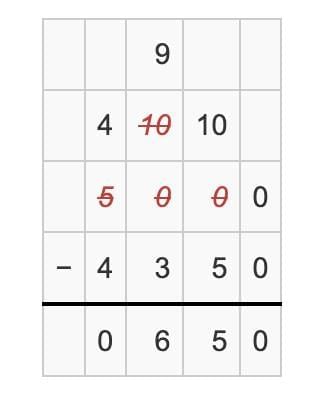 Answer: 650 g more rice is needed.
Answer: 650 g more rice is needed.
Q3: Convert 7 kg into grams.
Solution:
1 kg = 1000 g
7 × 1000 = 7000 g
Q4: A watermelon weighs 2 kg 750 g and a papaya weighs 1 kg 600 g. Find the total weight.
Solution:
Watermelon = 2 kg 750 g = 2750 g
Papaya = 1 kg 600 g = 1600 g
Total = 2750 + 1600 = 4350 g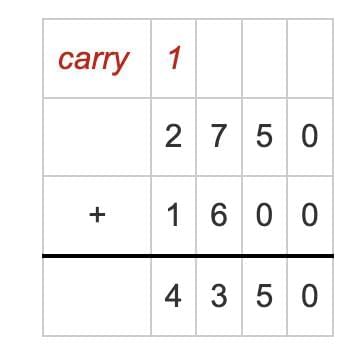 Convert back: 4350 g = 4 kg 350 g
Convert back: 4350 g = 4 kg 350 g
Answer: 4 kg 350 g
Q5: Convert 4200 g into kilograms.
Solution:
4200 ÷ 1000 = 4.2 kg
Q6: A mango weighs 350 g and an apple weighs 275 g. Find their total weight.
Solution:Weight of a mango = 350 g
Weight of an apple = 275 g
Now,
350 g + 275 g = 625 g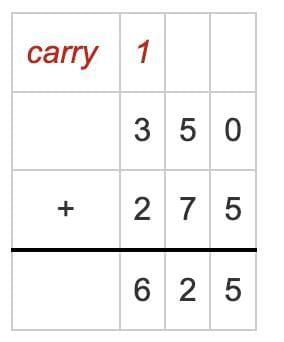
Q7: A sack of sugar weighs 6 kg 200 g. If 3 kg 750 g is used, how much sugar is left?
Solution:
Total = 6 kg 200 g = 6200 g
Used = 3 kg 750 g = 3750 g
Remaining = 6200 – 3750 = 2450 g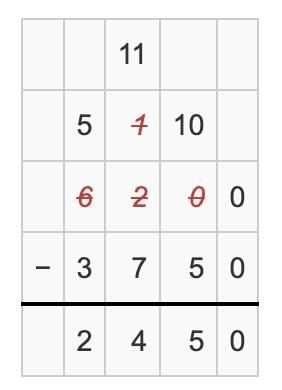 = 2 kg 450 g
= 2 kg 450 g
Answer: 2 kg 450 g left
Q8: A pumpkin weighs 5 kg 500 g. If 2 kg 250 g is cut from it, find the remaining weight.
Solution:
Total = 5 kg 500 g = 5500 g
Cut = 2 kg 250 g = 2250 g
Remaining = 5500 – 2250 = 3250 g 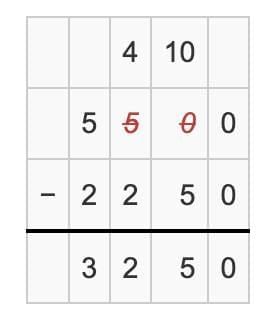 = 3 kg 250 g
= 3 kg 250 g
Answer: 3 kg 250 g
Q9: A piece of chocolate weighs 75 g. If there are 12 such chocolates, what is the total weight?
Solution:
One chocolate = 75 g
12 chocolates = 75 × 12
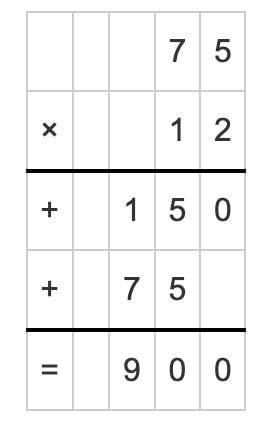 = 900 g= 0.9 kg
= 900 g= 0.9 kg
Answer: 900 g or 0.9 kg
Q10: Convert the following:
A) Convert 8 kg into grams.
Solution: 8 × 1000 = 8000 g
B) Convert 5600 g into kilograms.
Solution: 5600 ÷ 1000 = 5.6 kg
Q11: Calculate the total capacity: 2 L 450 mL, 3 L 275 mL and 1 L 900 mL.
Solution:
2 L 450 mL + 3 L 275 mL + 1 L 900 mL
= (2 + 3 + 1) L (450 + 275 + 900) mL
= 6 L 1625 mL
= 6 L + 1 L 625 mL = 7 L 625 mL
Q12: A jug contains 850 mL of milk. How much more milk is needed to make it 1 L?
Solution:
1 L = 1000 mL
Difference = 1000 – 850 = 150 mL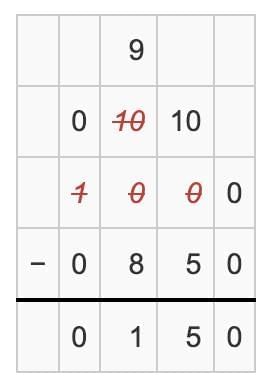
Q13: Convert 7 L into milliliters.
Solution:
1 L = 1000 mL
7 × 1000 = 7000 mL
Q14: A bottle contains 2 L 250 mL of juice, and another bottle contains 1 L 750 mL. Find the total.
Solution:
First bottle = 2250 mL
Second bottle = 1750 mL
Total = 2250 + 1750 = 4000 mL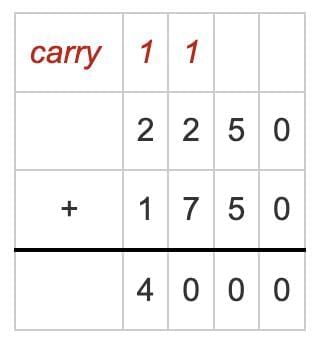 = 4 L
= 4 L
Answer: 4 L
Q15: Convert 3250 mL into liters.
Solution:
3250 ÷ 1000 = 3.25 L
Q16: A glass holds 250 mL of water. Another glass holds 180 mL. Find the total.
Solution:
250 + 180 = 430 mL
Q17: A can contains 6 L 500 mL of oil. If 3 L 750 mL is used, how much is left?
Solution:
Total = 6500 mL
Used = 3750 mL
Remaining = 6500 – 3750 = 2750 mL = 2 L 750 mL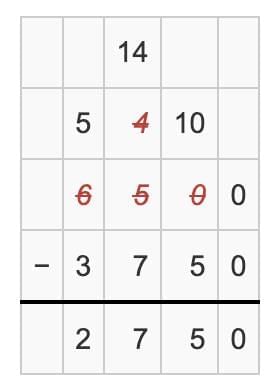 Answer: 2 L 750 mL
Answer: 2 L 750 mL
Q18: A tank has 10 L 800 mL of water. If 6 L 350 mL is removed, how much remains?
Solution:
Total = 10800 mL
Removed = 6350 mL
Remaining = 10800 – 6350 = 4450 mL = 4 L 450 mL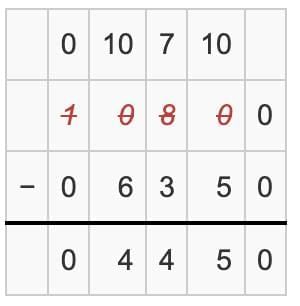 Answer: 4 L 450 mL
Answer: 4 L 450 mL
Q19: A cup holds 120 mL of juice. If there are 15 such cups, what is the total capacity?
Solution:
One cup = 120 mL
15 cups = 120 × 15 = 1800 mL = 1 L 800 mL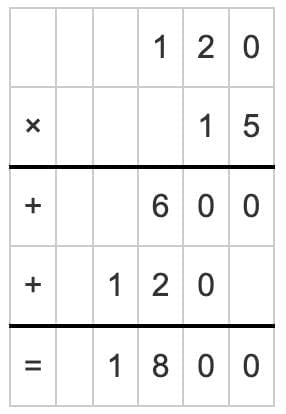 Answer: 1 L 800 mL
Answer: 1 L 800 mL
Q20: Convert the following:
A) Convert 9 L into milliliters.
Solution: 9 × 1000 = 9000 mL
B) Convert 12500 mL into liters.
Solution: 12500 ÷ 1000 = 12.5 L
|
35 videos|318 docs|7 tests
|
FAQs on Important Questions: Weight and Capacity - Mathematics (Maths Mela) Class 5 - New NCERT
| 1. What are the basic units of weight and capacity used in measurements? |  |
| 2. How can I convert grams to kilograms and vice versa? |  |
| 3. What is the relationship between liters and milliliters? |  |
| 4. Why is it important to understand weight and capacity in daily life? |  |
| 5. How can I practice converting between different units of weight and capacity? |  |















